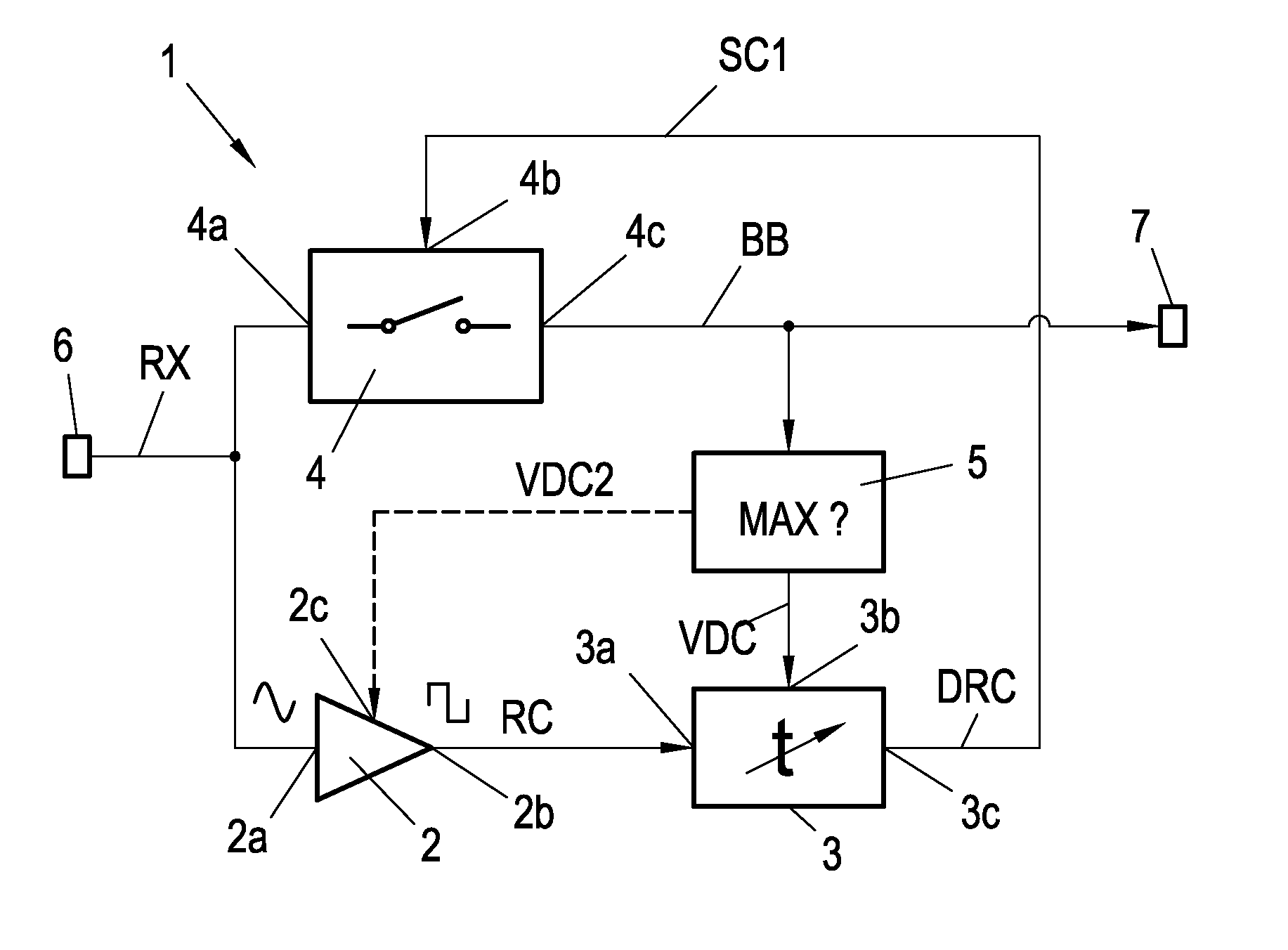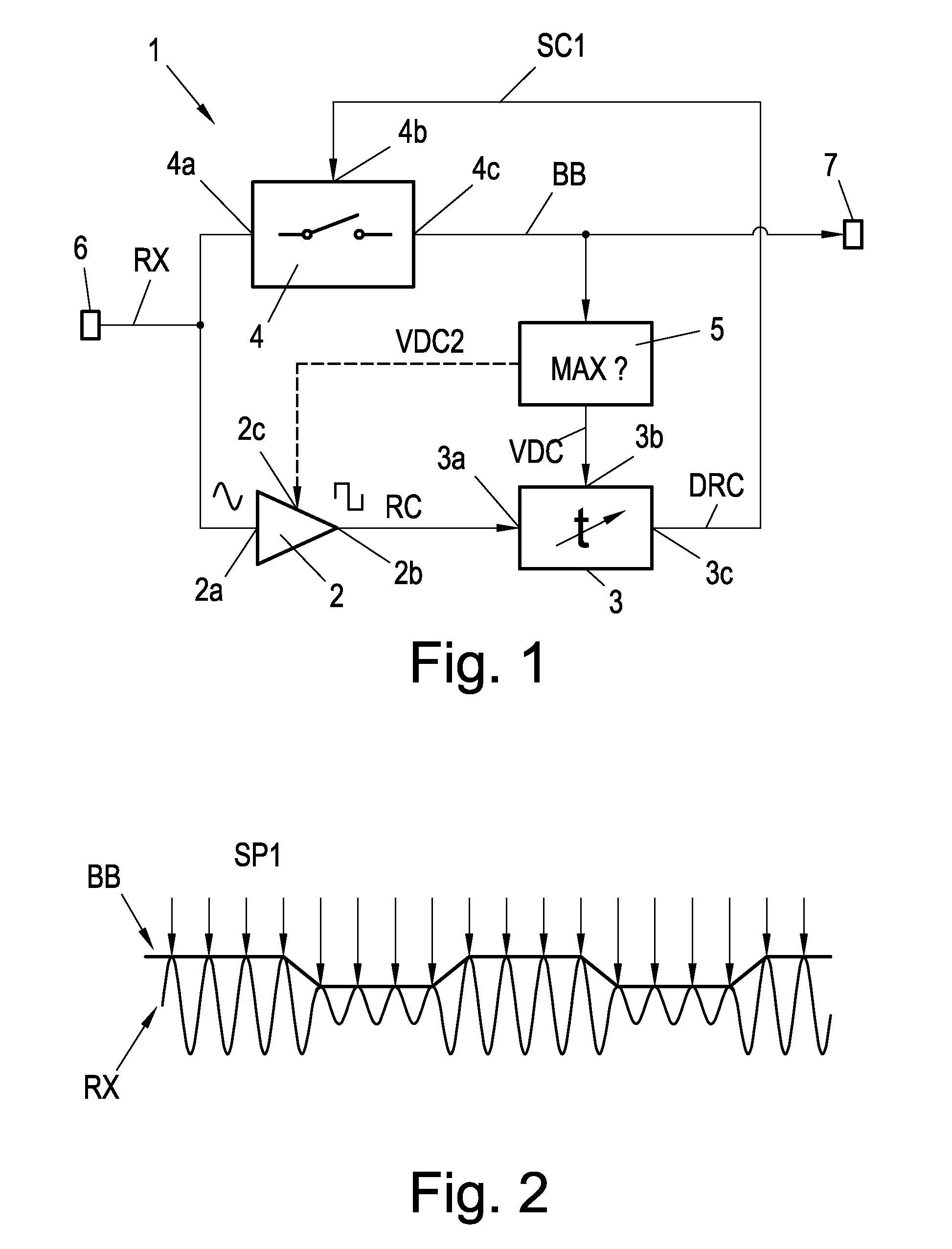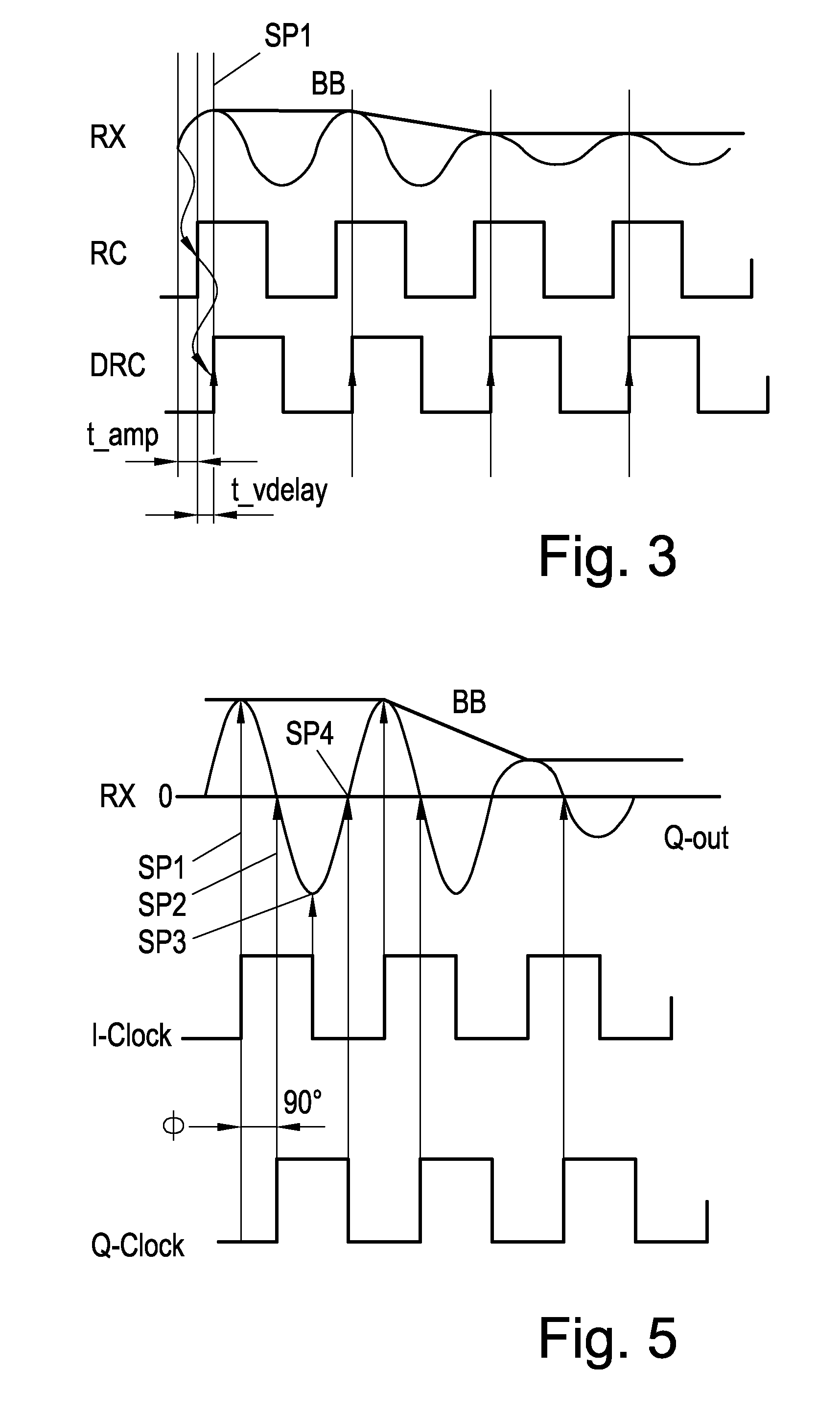Demodulation circuit for ASK coded or amplitude modulated signals as wells as NFC and RFID devices comprising the same
a demodulation circuit and coded or amplitude modulated (am) technology, applied in the direction of amplitude demodulation, pulse amplitude modulation, pulse technique, etc., can solve the problems of poor efficiency of rectification, complex design of filter for suppressing carrier signals, and implementation of demodulators, so as to improve sensitivity, reduce the effect of filter design and good carrier suppression
- Summary
- Abstract
- Description
- Claims
- Application Information
AI Technical Summary
Benefits of technology
Problems solved by technology
Method used
Image
Examples
Embodiment Construction
[0044]The basic idea of the demodulation circuit according to the invention is to use a sampling mixer which directly converts the RF signal at a circuit input of the demodulation circuit to the baseband signal of the RF signal, wherein the clock signal needed for this sampling mixer is derived from the RF signal.
[0045]FIG. 1 shows a block circuit diagram of an implementation of the basic function of this invention. The demodulation circuit 1 is adapted to demodulate ASK coded signals RX or amplitude modulated (AM) signals being received at a circuit input 6. It should be observed, that for the sake of simplicity the following description specifically refers to ASK coded signals RX. However, the invention is generally applicable to the demodulation of any form of ASK coded or amplitude modulated (AM) signals. Hence, the term “ASK coded signals RX” used herein is to be understood in a broad sense also comprising amplitude modulated signals. The ASK coded signal RX comprises a carrier...
PUM
 Login to View More
Login to View More Abstract
Description
Claims
Application Information
 Login to View More
Login to View More - R&D
- Intellectual Property
- Life Sciences
- Materials
- Tech Scout
- Unparalleled Data Quality
- Higher Quality Content
- 60% Fewer Hallucinations
Browse by: Latest US Patents, China's latest patents, Technical Efficacy Thesaurus, Application Domain, Technology Topic, Popular Technical Reports.
© 2025 PatSnap. All rights reserved.Legal|Privacy policy|Modern Slavery Act Transparency Statement|Sitemap|About US| Contact US: help@patsnap.com



